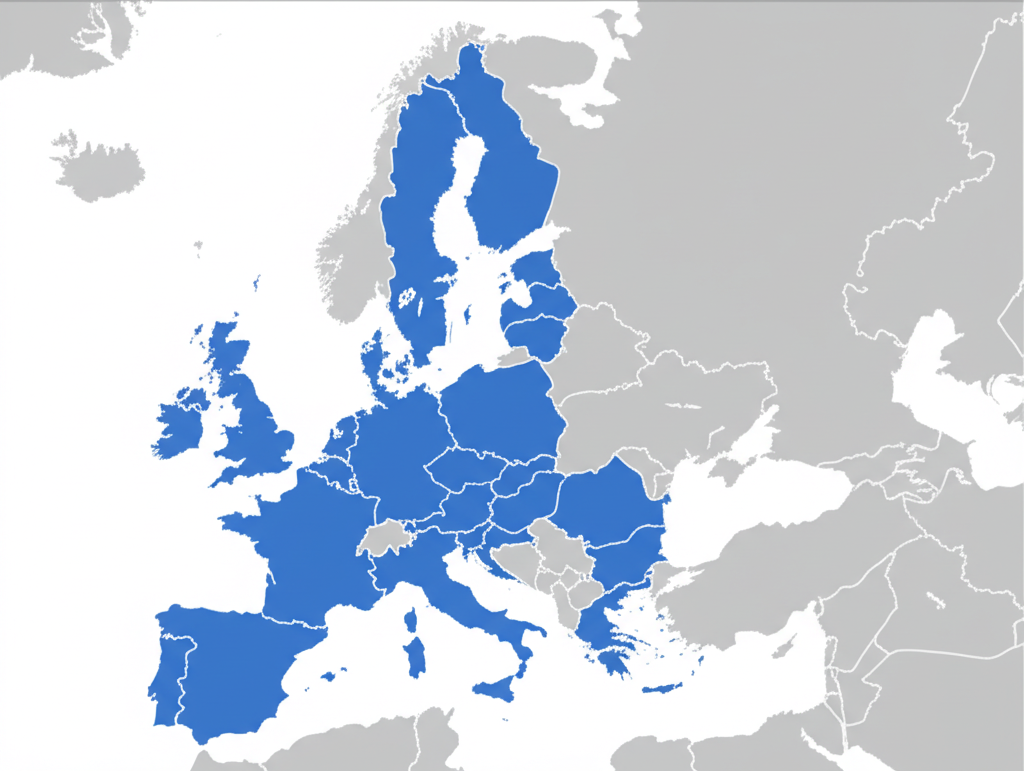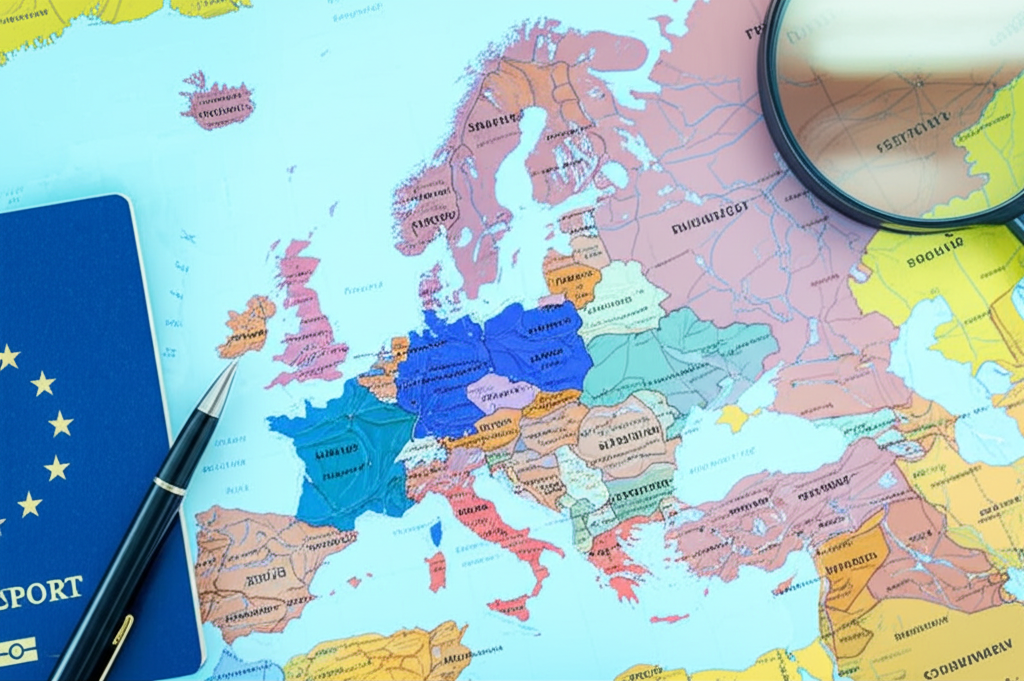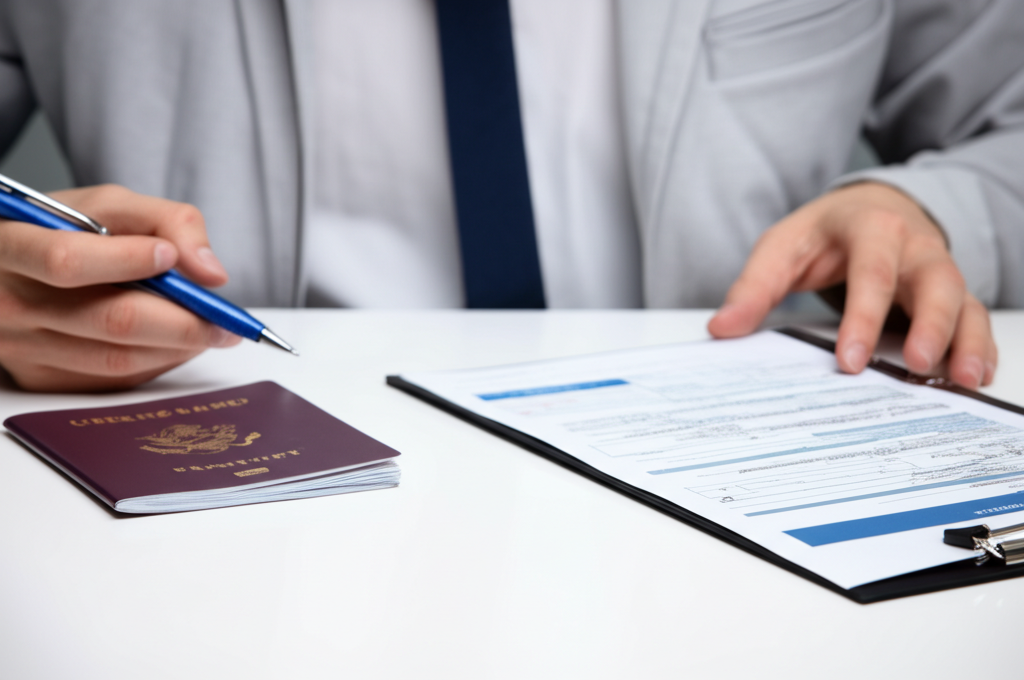Complete Guide to Schengen Visa Applications in 2025

Complete Guide to Schengen Visa Applications in 2025

The Schengen Area remains one of the most visited regions in the world, comprising 26 European countries that have officially abolished border controls at their mutual borders. For travelers from many countries outside the European Union, a Schengen visa is required to visit these countries. This comprehensive guide covers everything you need to know about applying for a Schengen visa in 2025.
What is a Schengen Visa?
A Schengen visa is a short-stay visa that allows its holder to travel to any member of the Schengen Area for stays up to 90 days within a 180-day period. Whether for tourism, business meetings, or visiting family, this visa opens the doors to multiple European countries with a single application.
Schengen Area Countries
The Schengen Area currently includes the following countries:
- Austria (EU Member)
- Belgium (EU Member)
- Czech Republic (EU Member)
- Denmark (EU Member)
- Estonia (EU Member)
- Finland (EU Member)
- France (EU Member)
- Germany (EU Member)
- Greece (EU Member)
- Hungary (EU Member)
- Iceland
- Italy (EU Member)
- Latvia (EU Member)
- Liechtenstein
- Lithuania (EU Member)
- Luxembourg (EU Member)
- Malta (EU Member)
- Netherlands (EU Member)
- Norway
- Poland (EU Member)
- Portugal (EU Member)
- Slovakia (EU Member)
- Slovenia (EU Member)
- Spain (EU Member)
- Sweden (EU Member)
- Switzerland

Types of Schengen Visas
- Type A (Airport Transit Visa): Allows you to transit through the international transit areas of Schengen airports without entering the Schengen territory.
- Type C (Short-Stay Visa): The most common type, allowing stays of up to 90 days within a 180-day period for tourism, business, visiting family/friends, or cultural activities.
- National Visa (Type D): For stays longer than 90 days, issued according to individual member states' national legislation.
Essential Requirements for a Schengen Visa
Here are the standard documents required for a Schengen visa application:
Visa Application Form
A completed and signed Schengen visa application form. This must be filled out truthfully and completely.
Note: Forms can be downloaded from the embassy/consulate website or filled out online in some cases.
Valid Passport
Your passport must be valid for at least three months beyond your planned departure date from the Schengen Area. It should have at least two blank pages and be issued within the last 10 years.
Passport-Size Photos
Two recent passport-sized photos (35mm x 45mm) with a light background, showing your full face.
Note: Photos must meet Schengen visa photo specifications.
Travel Medical Insurance
Insurance policy covering medical emergencies, hospitalization, and repatriation with minimum coverage of €30,000, valid throughout the Schengen Area.
Note: The insurance must cover your entire stay in the Schengen Area.
Round-Trip Flight Itinerary
Confirmed flight reservations showing entry to and exit from the Schengen Area.
Note: You don't need to purchase the tickets yet, just have a reservation.
Proof of Accommodation
Hotel reservations, rental agreements, or a letter of invitation from a host in the Schengen Area.
Proof of Financial Means
Recent bank statements, traveler's checks, or a letter from a sponsor proving you can support yourself during your stay (approximately €50-100 per day depending on the country).
Note: The amount required varies by country.
Travel Itinerary
A detailed day-by-day itinerary of your planned activities in the Schengen Area.
Employment Documentation
A letter from your employer stating your position, salary, and approved leave. If self-employed, business registration documents.
Note: Students should provide enrollment verification from their educational institution.
Proof of Ties to Home Country
Documents demonstrating your intention to return to your home country, such as property ownership, family ties, or ongoing employment.
Note: This is crucial to show you don't intend to overstay your visa.
The Application Process
Step 1: Determine the Appropriate Embassy/Consulate
Apply at the embassy/consulate of your main destination country (where you'll spend the most time). If visiting multiple countries equally, apply through the country of first entry.
Step 2: Book an Appointment
Most embassies require scheduling an appointment in advance through their website. In 2025, many consulates now offer virtual pre-screening appointments to expedite the process.
Step 3: Prepare Your Documents
Gather all required documents according to the specific requirements of the embassy where you're applying. Use our document checklist tool to ensure you have everything needed.
Step 4: Submit Your Application
Attend your appointment, submit your documents, pay the fee (€85 for adults, €45 for children aged 6-12 as of 2025), and provide biometric data if required.
Step 5: Wait for Processing
Processing times vary by embassy and season, typically ranging from a few days to three weeks. The standardized processing time goal for 2025 is 10 calendar days for complete applications.

Tips for a Successful Application
- Apply well in advance: Submit your application at least 15 days before your planned trip, ideally 1-2 months ahead.
- Be honest and consistent: Ensure all information in your application is truthful and matches your supporting documents.
- Provide comprehensive documentation: Include as much detail as possible about your travel plans and financial situation.
- Demonstrate ties to your home country: Show evidence that you have strong reasons to return home after your trip.
- Prepare for your interview: Be ready to clearly explain the purpose of your visit and answer questions about your itinerary.
- Follow country-specific guidelines: Each Schengen country may have additional requirements or procedures.
- Use high-quality photos: Ensure your photos meet the exact specifications to avoid delays.
- Organize your documents: Present your documents in a logical order with a table of contents.
Common Reasons for Rejection
- Insufficient explanation of visit purpose: Unclear or unconvincing reasons for your trip.
- Limited financial resources: Inability to demonstrate sufficient funds to cover your stay.
- Lack of travel insurance: Missing or inadequate travel insurance coverage.
- Weak ties to home country: Not providing enough evidence that you will return home after your visit.
- Incomplete documentation: Missing required documents or providing documents that don't meet specifications.
- Inconsistent information: Contradictions between your application form and supporting documents.
- Previous immigration violations: History of overstays or visa violations in Schengen countries or elsewhere.
- Security concerns: Issues related to public health, security, or international relations.
Key Changes in 2025
ETIAS Implementation
The European Travel Information and Authorization System is now fully operational for visa-exempt travelers.
Impact: Visa-exempt travelers must apply for ETIAS authorization before traveling to the Schengen Area.
Digital Visa Application
Most Schengen countries now accept fully digital visa applications with online document submission.
Impact: Reduced processing times and fewer in-person appointments required.
Biometric Updates
Enhanced biometric collection now includes facial recognition technology.
Impact: More secure identification process with faster border crossings for returning travelers.
Standardized Processing Times
Harmonized processing times across all Schengen member states, with standard applications processed within 10 calendar days.
Impact: More predictable planning for travelers with consistent timelines.
Special Considerations for Different Travel Purposes
Tourism
- Provide a detailed itinerary including all cities and attractions you plan to visit
- Include hotel reservations for your entire stay
- Show sufficient funds to cover all travel expenses
Business
- Include an invitation letter from the company you're visiting
- Provide documentation about your employer in your home country
- Explain the purpose and duration of your business activities
Visiting Family/Friends
- Include a formal invitation letter from your host
- Provide proof of your relationship with the host
- Your host may need to provide proof of accommodation and financial support
Medical Treatment
- Include a medical certificate from your doctor in your home country
- Provide confirmation from the medical institution in the Schengen Area
- Show proof of financial arrangements for the treatment
Conclusion
Obtaining a Schengen visa requires careful preparation and attention to detail, but with the right approach, it's an achievable goal for most travelers. By understanding the requirements and following the application process diligently, you can increase your chances of approval and soon be on your way to exploring the diverse cultures, histories, and landscapes of Europe.
For country-specific information, always check the official website of the embassy or consulate where you plan to apply, as requirements can vary slightly between different Schengen member states.
Need help preparing your Schengen visa documents? Our document generation tools can help you create professional, accurate documentation for your visa application.
Last updated: January 15, 2025
Need Help With Your Visa Documents?
Our document generation tools can help you create professional visa application documents quickly and accurately.